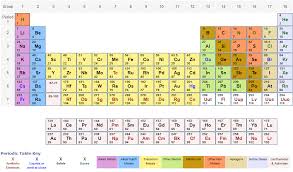Atomic Mass
Key Questions
-
Answer:
Atomic masses increase from left to right and from top to bottom of the Periodic Table.
Explanation:
As you go from left to right in the Periodic Table, you are adding more protons and neutrons to the nuclei. The atoms in the rows further down have even more protons and nucleons.
Therefore, atomic mass increases from left to right and from top to bottom of the Periodic Table.
-
That's the number shown at the bottom of a box in the Periodic Table (it's also always the bigger of the two numbers).
 )
)When you take the mass of an element, there are two main ways you can do it.
You can either measure the mass of one isotope of the element (isotopic mass), or you can take a sample of the element that has multiple isotopes (in the quantities they naturally occur) in it and calculate the mean average atomic mass of the sample (average atomic mass).
A good example of this is chlorine. Chlorine naturally occurs as a mixture of two isotopes: chlorine-35 and chlorine-37 (The isotopic masses of these are 35 u and 37 u respectively.).
A naturally occurring sample of chlorine is 75.78% chlorine-35 and 24.22% chlorine-37, so, to calculate the average mass, we need to do the sum
35×0.7578+37×0.2422=35.5 which gives us the mass shown on the periodic table, 35.5 u.
Here is a video which summarizes how to calculate average atomic mass.
video from: Noel Pauller -
Answer:
The sum of mass of proton,electron and neutron (individual components) of an atom is atomic mass.
Explanation:
Simple the definition lies in the meaning itself. The mass of an atom is refereed as its atomic mass.
Measured in:- amu or atomic mass unit
Commonly the atomic mass is calculated by adding the number of protons and neutrons together whereas electrons are ignored.
Expressed in:- grams or any other units to measure weight.
Standard:- 1/12th of mass of a C-12 isotope.
In case of H, He , LI , Be , B , C , N , O , F , Ne , Na , Mg , Al , Si , P, S , Cl, Ar , K , and Ca except Li , Be, B, F, Na , Al , P, Cl , K and Ar,
atomic mass= double the atomic number
Here are some of the elements and their atomic mass-
